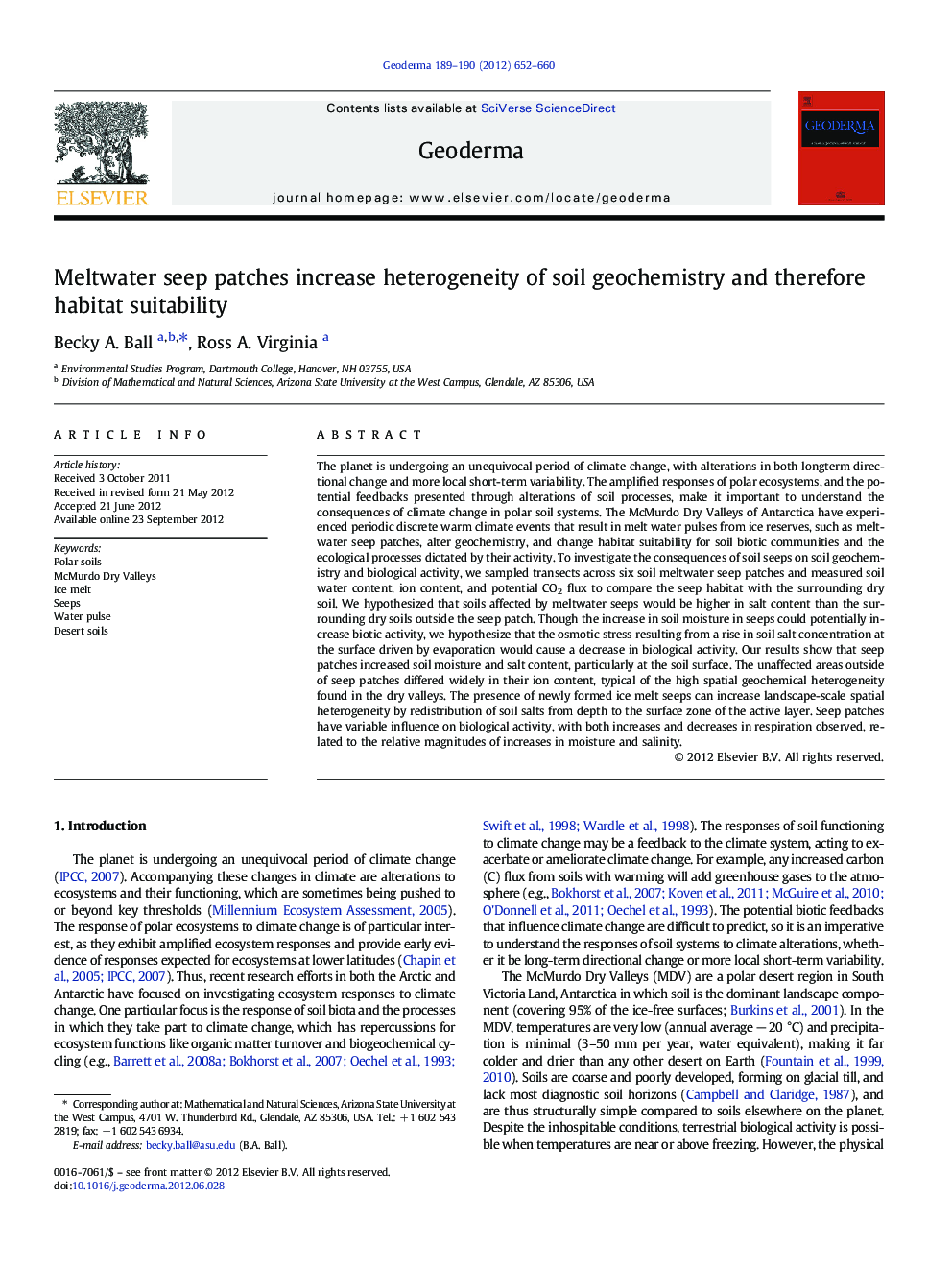| Article ID | Journal | Published Year | Pages | File Type |
|---|---|---|---|---|
| 4573639 | Geoderma | 2012 | 9 Pages |
The planet is undergoing an unequivocal period of climate change, with alterations in both longterm directional change and more local short-term variability. The amplified responses of polar ecosystems, and the potential feedbacks presented through alterations of soil processes, make it important to understand the consequences of climate change in polar soil systems. The McMurdo Dry Valleys of Antarctica have experienced periodic discrete warm climate events that result in melt water pulses from ice reserves, such as meltwater seep patches, alter geochemistry, and change habitat suitability for soil biotic communities and the ecological processes dictated by their activity. To investigate the consequences of soil seeps on soil geochemistry and biological activity, we sampled transects across six soil meltwater seep patches and measured soil water content, ion content, and potential CO2 flux to compare the seep habitat with the surrounding dry soil. We hypothesized that soils affected by meltwater seeps would be higher in salt content than the surrounding dry soils outside the seep patch. Though the increase in soil moisture in seeps could potentially increase biotic activity, we hypothesize that the osmotic stress resulting from a rise in soil salt concentration at the surface driven by evaporation would cause a decrease in biological activity. Our results show that seep patches increased soil moisture and salt content, particularly at the soil surface. The unaffected areas outside of seep patches differed widely in their ion content, typical of the high spatial geochemical heterogeneity found in the dry valleys. The presence of newly formed ice melt seeps can increase landscape-scale spatial heterogeneity by redistribution of soil salts from depth to the surface zone of the active layer. Seep patches have variable influence on biological activity, with both increases and decreases in respiration observed, related to the relative magnitudes of increases in moisture and salinity.
► We sampled permafrost meltwater seep patches in a polar desert in Antarctica. ► Seeps increased soil moisture and salt content compared to the surrounding soil. ► Seeps redistribute soil salts from depth to the surface zone of the active layer. ► Biotic activity was related to the relative size of increases in moisture and salt. ► The formation of seeps will increase landscape-scale spatial heterogeneity.
